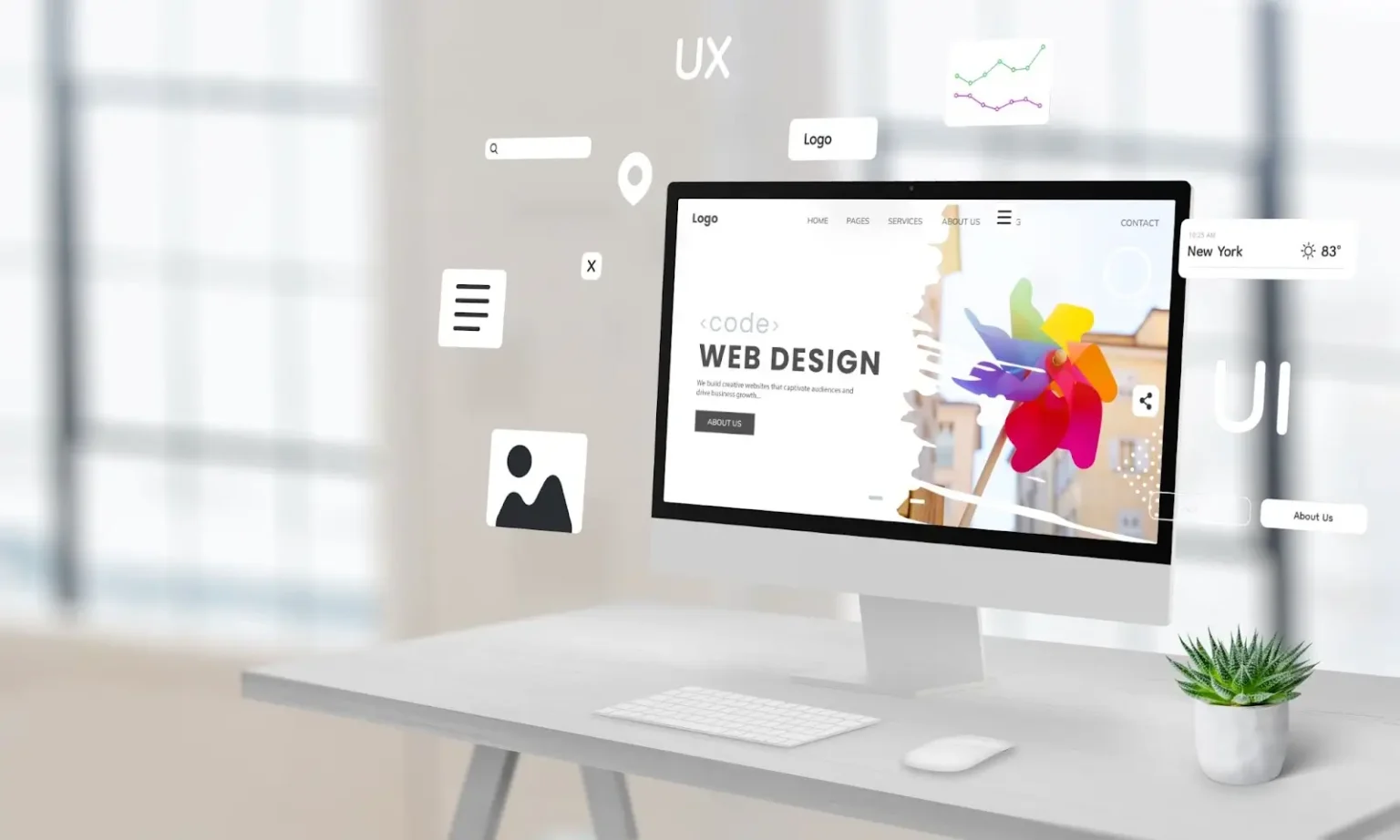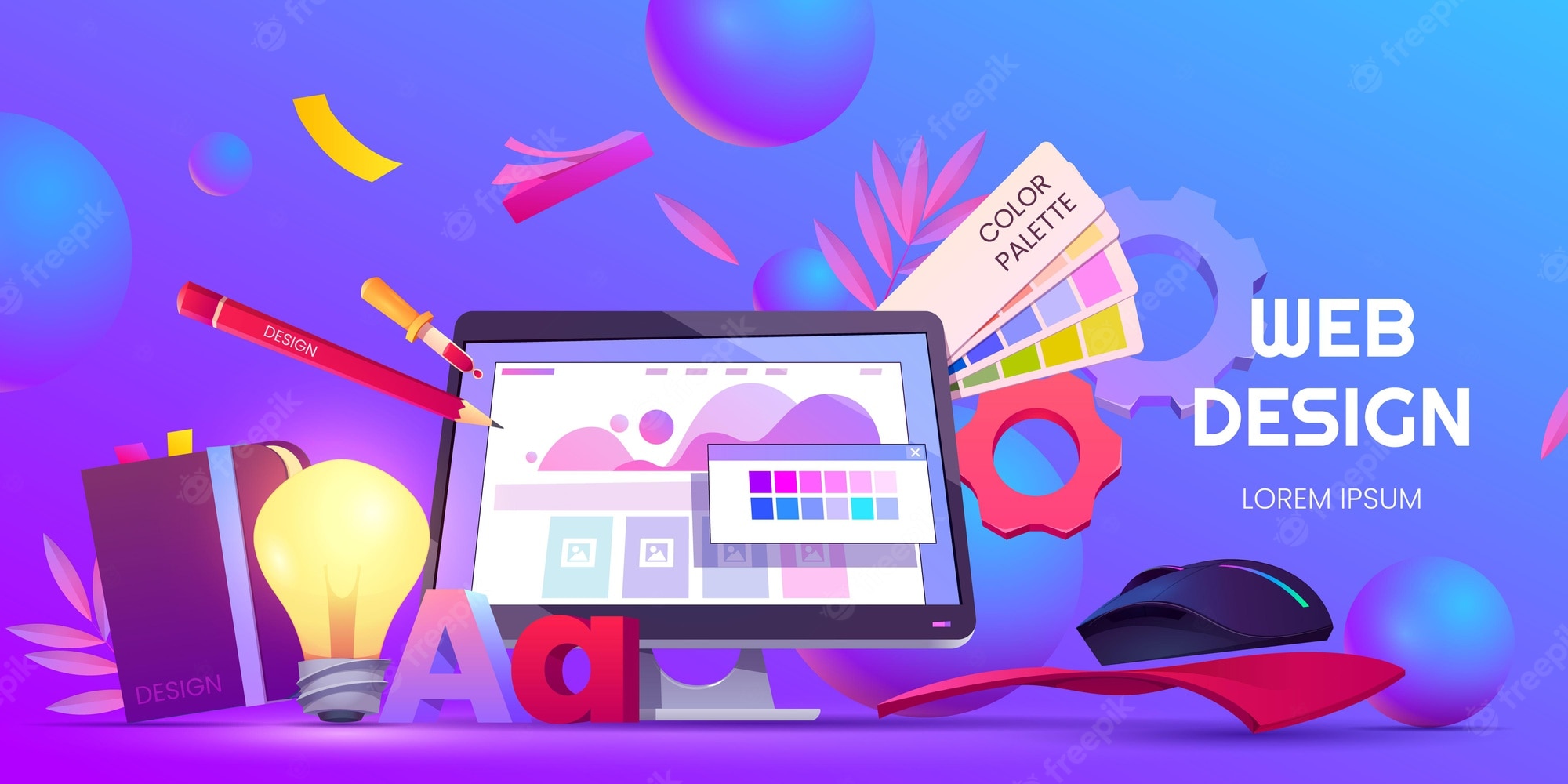Leading Web Design services that guide businesses build stronger online brands
Wiki Article
The Value of User Experience in Effective Web Design Approaches
User experience (UX) functions as a cornerstone in efficient web design approaches. It shapes how users connect with a website, influencing their satisfaction and probability of returning. A properly designed UX can boost interaction through instinctive navigation and responsive layouts. Ignoring these facets may lead to irritation and increased bounce prices. Comprehending the details of UX is important for developers intending to create compelling digital experiences that reverberate with varied audiences. What variables absolutely drive effective user involvement?Comprehending User Experience and Its Influence On Design
Although user experience (UX) is usually regarded as a simple facet of web design, it fundamentally forms just how users interact with an internet site. UX encompasses all aspects of the user's communication, including functionality, availability, and overall fulfillment. A positive UX promotes engagement, motivating customers to check out the website and return in the future. Conversely, a negative experience can cause aggravation, causing high bounce rates and shed possibilities for conversion.Style aspects like navigation, material, and format company play critical roles in forming this experience. Effective UX style expects user requirements and preferences, ensuring that info is aesthetically enticing and quickly obtainable. Additionally, understanding user habits via analytics can offer beneficial understandings, informing layout decisions that boost usability. Ultimately, a comprehensive understanding of UX allows developers to develop web sites that not just draw in individuals however additionally promote meaningful interactions that straighten with business objectives and user expectations.
Trick Principles of Efficient User Experience
Reliable user experience hinges on a number of vital concepts that improve web site functionality and involvement. Instinctive navigation design, responsive layout fundamentals, and the relevance of aesthetic power structure are important elements that contribute to a seamless communication in between customers and web content. Comprehending these principles enables designers to develop more straightforward and accessible electronic environments.Instinctive Navigation Design
When individuals run into a web site, intuitive navigation design acts as a critical gateway to their total experience. Reliable navigation allows customers to effortlessly locate the information they seek, improving their interaction with the website. Secret concepts include clear labeling, rational company, and consistent placement of navigation aspects. Labels must be straightforward, allowing users to predict the content they will certainly discover. A well-structured power structure helps individuals understand the partnership between various sections, directing them with the internet site seamlessly. Additionally, responsive menus and quickly accessible links add to a fluid experience throughout tools. By focusing on intuitive navigation, developers can greatly minimize user disappointment and increase engagement, eventually promoting a favorable assumption of the website and its content.Responsive Format Fundamentals
A well-structured navigation system normally causes the need for a responsive layout, which is vital in today's diverse electronic landscape. A responsive layout warranties that websites function seamlessly across different devices, including tablet computers, desktop computers, and mobile phones. This versatility improves user experience by permitting web content to be easily accessible and aesthetically systematic, regardless of screen size. Secret concepts of receptive layout consist of liquid grids, flexible photos, and media inquiries, which promote suitable viewing. Additionally, prioritizing touch-friendly components enhances interaction on mobile gadgets. By applying a receptive layout, designers can accommodate users' needs, reduce bounce prices, and rise involvement. Ultimately, a well-executed receptive design cultivates a favorable user experience, encouraging visitors to check out the web site better.Aesthetic Hierarchy Relevance
Aesthetic power structure plays a vital function in assisting individuals with a website, guaranteeing that essential info catches their interest first. By tactically making use of size, color, spacing, and contrast, developers can produce a clear pathway for customers to comply with. Larger aspects often draw the eye, showing their importance, while contrasting colors can highlight contact us to action. Furthermore, regular placement and collection of relevant web content boost understanding, making navigating instinctive. Reliable use aesthetic pecking order not only enhances functionality however additionally sustains the overall visual of the site, cultivating a positive user experience. When individuals can conveniently determine one of the most essential info, they are most likely to engage with the web content, causing increased contentment and interaction with the site.The Role of Functionality in Web Design
Use plays an essential function in web design, especially with navigation simpleness and adherence to access standards. Effective navigation enhances user satisfaction by permitting visitors to locate info rapidly and intuitively. At the same time, conference accessibility requirements ensures that all individuals, despite their abilities, can successfully interact with the web site.Navigating Simplicity
Simplicity in navigation stands as a keystone of reliable web design, considerably affecting user experience. A streamlined navigation system permits users to discover information swiftly and without effort, decreasing irritation and boosting fulfillment. Clear labeling and logical structure are necessary elements, directing customers effortlessly through the internet site. Redundant links or excessively complex menus can confuse customers, bring about enhanced bounce prices. Furthermore, mobile responsiveness has to be taken into consideration, making sure navigating continues to be straightforward across gadgets. Minimizing and prioritizing essential web pages mess even more supports user involvement. Reliable navigation not only cultivates a positive experience but also urges my latest blog post individuals to check out the website better, inevitably causing higher conversion prices. In this respect, navigation simpleness works as an essential factor in the overall effectiveness of web design strategies.Ease of access Criteria
User engagement is greatly improved when internet sites abide by ease of access requirements, making sure that all individuals, no matter of their capacities, can browse and engage effectively. Conformity with these standards not just broadens the audience however also enhances general user fulfillment. Easily accessible style incorporates attributes such Recommended Reading as message alternatives for photos, keyboard navigating, and enough shade contrast, which assist in use by individuals with handicaps. Furthermore, executing these requirements can positively influence search engine optimization (SEARCH ENGINE OPTIMIZATION) by boosting website framework and clearness. As web design evolves, prioritizing access comes to be essential in fostering a comprehensive electronic atmosphere. By accepting these requirements, developers contribute to an extra equitable web, ultimately driving user commitment and interaction.Value of Responsive Design for User Involvement
As consumers increasingly accessibility sites via a range of devices, the relevance of responsive style becomes vital for engaging individuals successfully. Receptive layout warranties that an internet site adjusts effortlessly to various display dimensions, supplying an ideal viewing experience despite the tool used. This adaptability enhances user interaction by helping with less complicated navigating and communication with content.When individuals run into a website that is responsive, they are much more likely to stay longer, discover further, and return in the future. A well-designed responsive layout minimizes the irritation commonly connected with zooming and scrolling on smaller sized screens, thus reducing bounce rates. In addition, receptive design can favorably affect internet search engine rankings, as online search engine prioritize mobile-friendly sites. In today's electronic landscape, where mobile use remains to climb, applying receptive design is not simply helpful, however vital for keeping user engagement and ensuring a positive experience throughout all gadgets.
Enhancing Load Times for Better User Complete Satisfaction

To boost lots times, internet developers should focus on enhancing images, leveraging internet browser caching, and reducing HTTP demands. In addition, employing Content Distribution Networks (CDNs) can expedite content delivery by dispersing it throughout numerous geographic locations. Streamlining code, such as compressing CSS and JavaScript data, even more adds to faster loading rates.
Ultimately, a commitment to boosting load times not only increases user fulfillment but additionally reinforces brand name loyalty and improves the chance of repeat sees. A swift, smooth experience is vital for keeping users and promoting favorable interactions.
The Influence of Visual Pecking Order on User Communication
Visual power structure acts as a necessary element in guiding user communication on a website. By arranging web content in such a way that prioritizes information visually, developers can affect just how users engage and navigate with a site. This pecking order is developed through numerous layout methods, consisting of size, shade, spacing, and comparison. Bigger fonts or bold colors attract attention to critical elements, such as calls to action or headings, while subdued colors and smaller sized font styles can show subordinate info.Effective visual hierarchy helps customers rapidly determine what is essential, minimizing cognitive tons and boosting use. It enables intuitive navigating, making it simpler for customers to locate what they need without irritation. As users engage with a site, a well-structured visual power structure promotes a much more rewarding experience, ultimately causing higher interaction and conversion prices. Designers should prioritize these concepts to create a efficient and user-centered internet setting.
Determining User Experience: Tools and Methods

Regularly Asked Concerns
Exactly How Can I Improve My Site's User Experience on a Spending plan?
To improve a web site's user experience on a budget plan, one can maximize page tons speed, streamline navigating, carry out responsive design, boost content quality, and gather user feedback for continual refinements, making sure a satisfying visitor experience.What Are Common User Experience Mistakes to Avoid in Web Design?
Common user experience errors in web design include cluttered designs, inadequate navigating, sluggish loading times, lack of mobile responsiveness, neglecting ease of access, inconsistent branding, and falling short to prioritize user responses - web design company. Each can substantially impede general site performance
How Commonly Should I Update My Site for Better User Experience?
Internet sites need to be upgraded regularly, ideally every couple of months, to preserve perfect user experience. Regular updates help address use concerns, revitalize material, and adapt to changing user requirements, ensuring the website continues to be appropriate and interesting.
Can User Experience Impact SEO Rankings on My Website?
User experience can substantially impact search engine optimization positions, as online search engine prioritize sites that use seamless navigating, fast packing times, and interesting content. A positive user experience can result in reduced bounce prices and greater search presence.What Duty Does Availability Play in User Experience Style?
Accessibility plays an essential role in user experience design by ensuring that all people, despite capabilities, can browse and engage with a website efficiently. This inclusivity enhances overall fulfillment and interaction among varied users.User experience (UX) is commonly regarded as a simple facet of internet style, it essentially forms exactly how individuals engage with a web site. User involvement is significantly boosted when websites stick to ease of access requirements, making sure that all individuals, regardless of their capacities, can navigate and interact properly. Gauging user experience (UX) is essential for comprehending exactly how efficiently a website meets the demands of its individuals. Additionally, usability screening, where actual users navigate the site while viewers note problems, supplies direct responses on user experience. Common user experience mistakes in internet layout consist of cluttered formats, inadequate navigation, slow-moving packing times, absence of mobile responsiveness, neglecting access, inconsistent branding, and stopping working to focus on user comments.
Report this wiki page